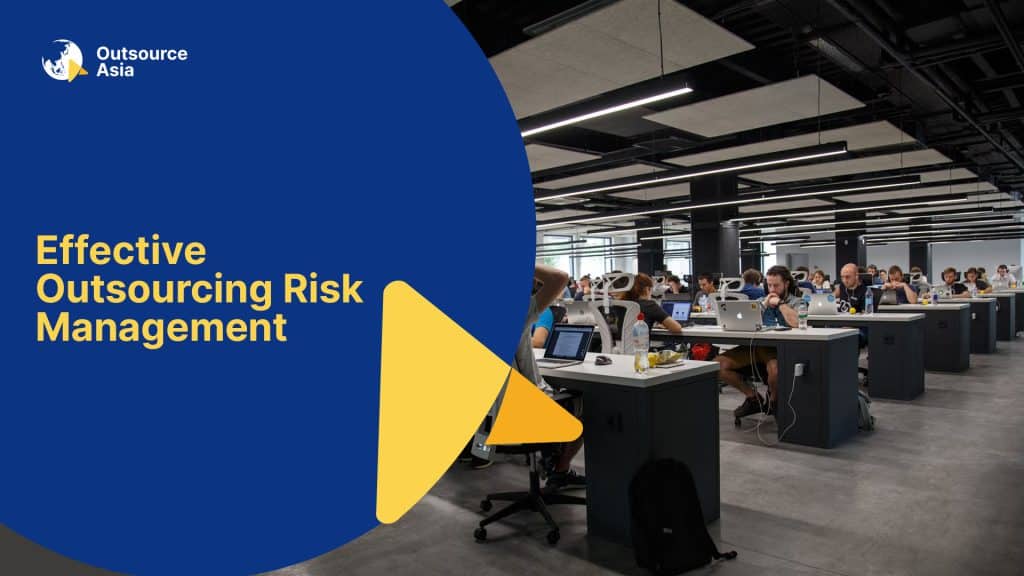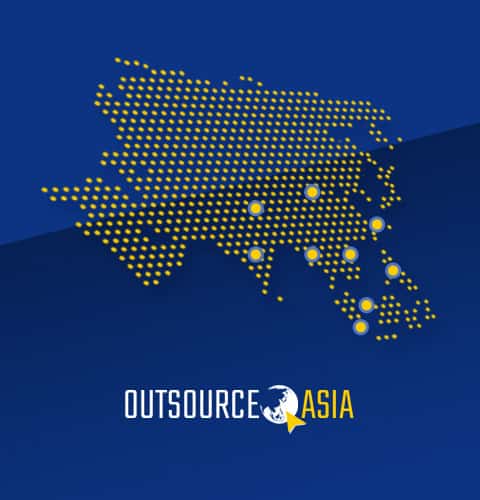
Effective Outsourcing Risk Management
The way you handle outsourcing contracts reveals a lot about your organization. Having a firm grasp on outsourcing is unquestionably required to avoid associated hazards and vulnerabilities, which can range from the operational impact of third-party failures to the reputational impact of poor work practices of outsourced service providers. However, it also establishes the benchmark by which outsourcing companies will judge you, and if handled well, it can open the door to strategic opportunities arising from good cost-cutting and innovation. Organizations that lose control of their outsourcing management suffer increased regulatory scrutiny, reputational loss, and, eventually, a customer backlash.
The constant management and reduction of risks throughout the outsourcing lifecycle is a clear problem for global firms. Up to the signing of a written agreement, the focus of outsourcing is all too often on the procurement and vendor evaluation process. But an effective outsourcing risk management strategy should go beyond procurement and contractual modalities. It should investigate the implementation and continuous monitoring of outsourcing agreements, including vendor performance, contract compliance, and ensuring effectiveness and efficiency.
Here’s a five-step process for managing outsourcing risks effectively:
1. Make outsourcing risk management a corporate responsibility rather than just a functional skill.
This necessitates collaboration across all business stakeholders to identify, prepare, and respond to the organization’s most pressing outsourcing risks. A greater understanding of a company’s risk appetite is required to ensure successful implementation of short- and long-term business goals as well as cost-effective and efficient outsourcing risk response plans. Planning ahead of time and concentrating on a certain goal can help.
2. Follow outsourcing risk-management best practices.
Outsourcing risk management while maintaining normal business operations necessitates flexibility. Sustainable solutions and best practices must be ingrained in the culture of organizations for them to remain effective.
Use PERT, Gantt charts, and critical-path analyses as guides to complete work on time and on budget. More importantly, there should be the effective use of personnel who possess the appropriate project and risk management skills and experience.
3. Make data and analytics work for you.
Companies may improve risk management by embracing the digital revolution. Automation can digitize transaction procedures from start to finish, decreasing human error. Rich data streams from established sources like rating agencies and atypical sources like social media provide a more detailed and granular perspective of risk factors. Better error detection, more accurate forecasts, and micro-level segmentation are all possible thanks to sophisticated algorithms.
4. Invest in risk talent for the future.
Outsourcing risk managers will need to build new capabilities and improve their domain expertise to meet future expectations. A solid awareness of how the business functions will serve as a crucial foundation for a comprehensive understanding of the risk landscape in the outsourcing industry. As their firm navigates the outsourcing landscape in the new normal, risk professionals may provide improved monitoring and challenge while also functioning as effective counselors and partners.
Risk managers will also require a solid grasp of data, analytics, and technology, which are all driving changes in how most businesses operate – a trend that has only been hastened by the COVID-19 disaster. This is true in terms of how data and digital interfaces affect company operations, how organizations use artificial intelligence to support day-to-day choices, and how the digital revolution is influencing risk management.
To bring it all together, outsourcing risk managers will need to build agile competencies and mindsets that will enable them to quickly recognize opportunities to bring together stakeholders and contributors from various functions and deliver quick solutions. People will require leadership and personal talents to quickly connect with colleagues who have the necessary skills and expertise.
6. Strengthen the outsourcing risk culture
This refers to the beliefs and behavioral conventions that determine how a company identifies and manages outsourcing risks. Outsourcing risk culture is especially important in times of high uncertainty, such as with the COVID-19 epidemic. Reflexive muscles cannot be relied upon by businesses to predict and control hazards. A healthy outsourcing risk culture allows a company to move quickly without breaking everything. It is the company’s most effective cross-cutting defense.
A robust outsourcing risk culture is a vital component of institutional resilience in the face of any challenge, regardless of the difficulties of navigating through a post-pandemic business environment. Organizations that have built a mature outsourcing risk culture outperform peers during economic cycles and in the face of difficult external shocks. Companies with strong outsourcing risk cultures, on the other hand, are less likely to incur self-inflicted wounds such as operational errors or reputational issues and have more engaged and satisfied customers and workers.
Several key traits are shared by companies with strong outsourcing risk cultures. Most importantly, true outsourcing risk culture ownership and responsibility lies with the front lines, with executive-level accountability for cultural failures. Culture must be tied to an institution’s day-to-day business operations and outcomes to be fully lived. Simultaneously, someone must oversee managing the definition, measurement, reporting, and reinforcement of outsourcing risk culture. It is impossible to achieve meaningful, coordinated cultural transformation without an enterprise-wide perspective. Finally, continuous attention to outsourcing risk culture is required. Maintaining and reinforcing a strong outsourcing culture takes time and effort.
Managing the Risk of Outsourcing
Communication is the most important aspect of outsourcing risk management. Many problems can be overcome by establishing clear deadlines, business objectives, and communicating any unsatisfactory performance so that it can be addressed. This entails developing internal communication between key members of the outsourced company’s personnel and a management team.
To secure your protection, draft an impenetrable outsourcing contract that has been examined by a legal professional. This includes a non-disclosure agreement (NDA) for any confidential information that the outsourced partner may meet.
Request for FREE CONSULTATION with Outsource Asia experts for a more detailed assessment of your firm and for insights that can help you ensure that the organizations you work with are secure and comply with all standards, rules, and contract terms.

